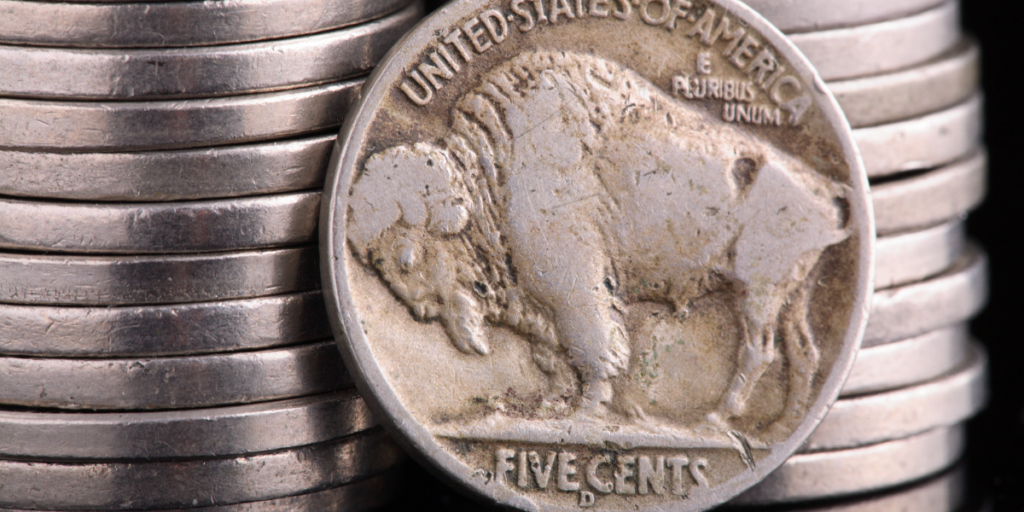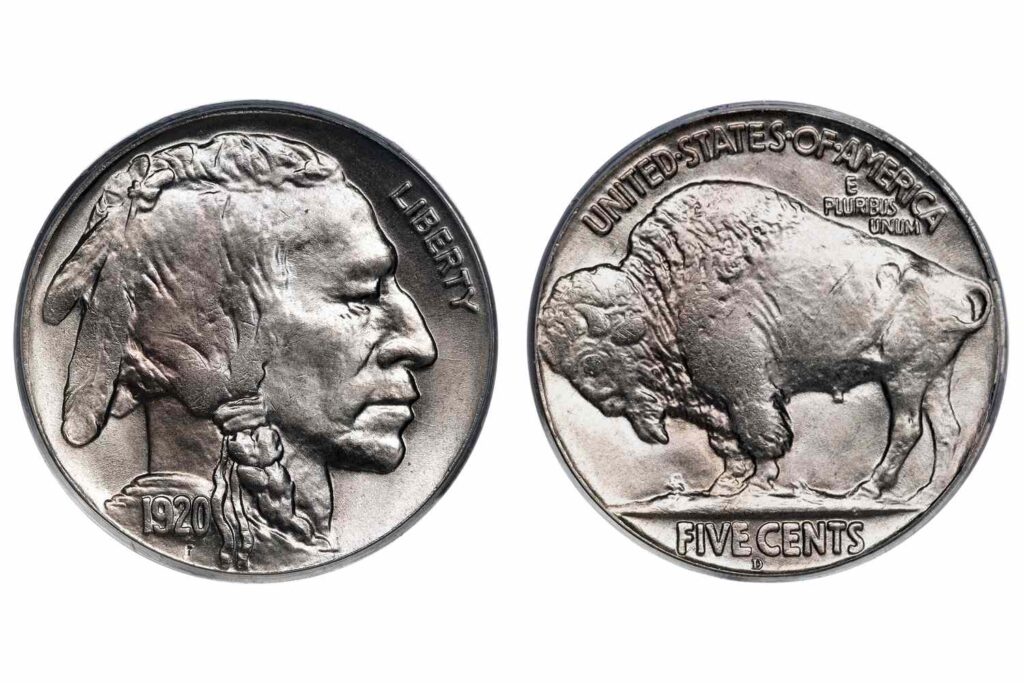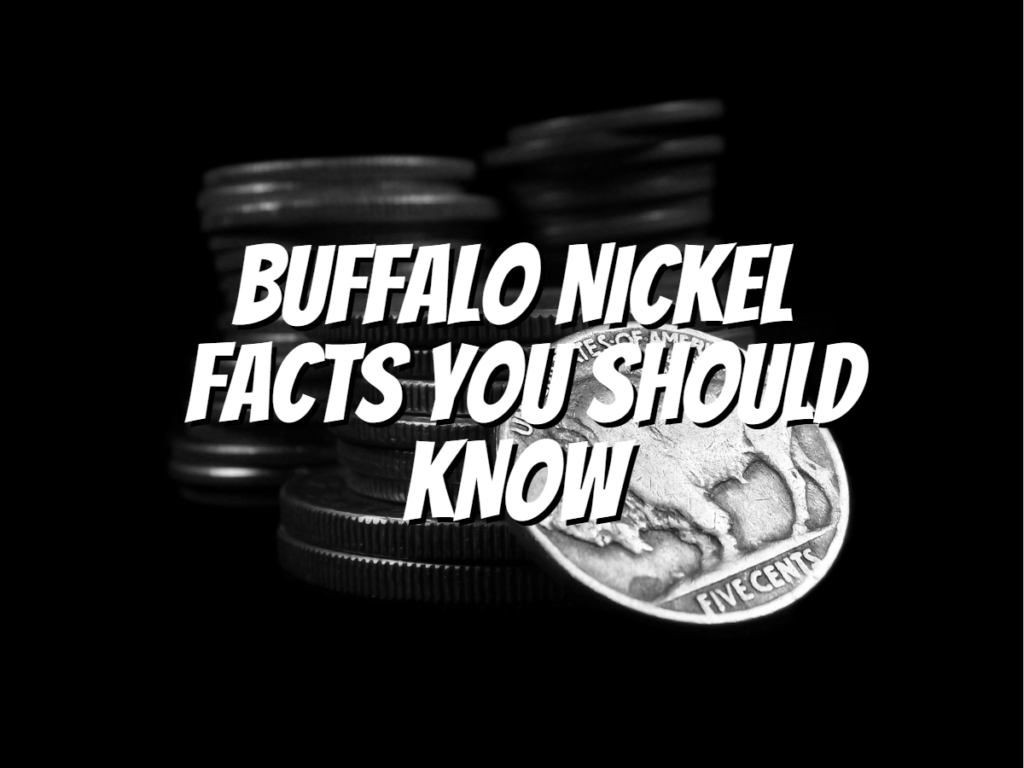If you’re a fan of American history like me, there are few things as exciting as the transition from bimetallism to fiat currency.
It’s a fascinating period in our nation’s history that produced many different coins, including this nickel. If you want to learn more about this coin, keep reading!
What is a Buffalo Nickel?

While researching this topic, I learned that James Earle Fraser created the Buffalo nickels, also known as Indian Head nickels, minted from 1913 to 1938.
The term, which has gained popularity, is inaccurate in this instance because the large animal depicted on the coin’s reverse is an American bison which I find beautiful!
The Native American depicted on the coin’s obverse is a composite image of several people Fraser sketched while creating.
Between 1907 and 1909, five US coin denominations received new designs as part of a campaign to beautify the coinage.
Officials from the Taft administration chose to have Fraser redesign the nickel’s Liberty Head in 1911, replacing Charles E. Barber’s original design.
They were taken aback by Fraser’s artwork, which featured Native Americans and American bison.
Although the designs were given the go-ahead in 1912, the Hobbs Manufacturing Company, which produced mechanisms to detect slugs in nickel-operated machines, objected, which caused a delay of several months.
In addition, the company objected to Fraser’s changes to the coin, and in February 1913, Treasury Secretary Franklin MacVeagh decided to release the coins anyway.
History of Buffalo Nickel
Theodore Roosevelt, the president at the start of the 20th century, frequently disliked the artistic designs on US coins. As a result, the US Mint hired artist Augustus Saint-Gaudens intending to revive the design of US coins.
Unfortunately, Saint-Gaudens tragically passed away unexpectedly in 1907, long before most of his design ideas were ever used on coins.
A few years later, in 1911, the son of the Treasury Secretary at the time, Frank MacVeagh, wrote to him that the US 5-cent piece was one of the nation’s most recognizable coins and that it merited a lovely design.
New designs for the nickel were considered soon after this letter came to light.
James Fraser, a second sculptor who worked as Saint-Gaudens’ apprentice, submitted design after design for the nickel to the US Mint.
High-ranking US Mint employees initially had President Lincoln’s likeness on the obverse of their nickels in mind, but soon a Native American-inspired design won out.
After much ongoing discussion, the new nickel was finally circulated on March 4th, 1913. Due to the high regard that most Americans had for nickel design, these coins quickly became the talk of the country.
After all, this was one of the first occasions when images from US coinage accurately portrayed the country’s historical origins. Although there were some additional production issues with the Buffalo Nickel, the coins remained used for a while.
Buffalo Nickel Design

Knowing more about the history may have piqued your interest in the coin’s design. The right-facing profile image of a Native American Indian dominates the coin’s obverse.
To honor the larger Native American culture as opposed to just one sect, the person depicted is said to have the features of Native Americans from several different tribes.
The Native American is depicted in such exquisite detail that, on well-preserved pieces, even the outline of his cheekbones can be easily seen. In addition, the artist has captured every nuance of his hair’s texture and the feathers that go with it.
As one might anticipate, the image on the coin’s reverse shows a buffalo facing to the left while perched atop a picturesque scene.
Like the Native American on the Obverse, the buffalo on the reverse has unmatched detail. In addition, the United States of America is inscribed above the image of the buffalo.
Despite some of its detractors, this coin’s design was revolutionary when struck. The Buffalo Nickel was produced for 25 years during the early 20th century, despite some adverse public reactions.
Buffalo Nickel Popularity
So if you’re going to ask me, the Buffalo Nickel is a very sought-after collectible these days. I had this in my collection, and the difficulty of assembling a complete set of Buffalo Nickels motivated me and some collectors to go to great lengths to obtain these coins.
Unfortunately, finding some Buffalo Nickel editions in good condition is just as complicated as assembling a complete set of Buffalo Nickels.
Since Buffalo Nickels’ condition is so important to us collectors, it stands to reason that we will pay top dollar for coins in the best condition.
Unfortunately, Buffalo Nickels are frequently worn due to their extreme age.
Remember that age and condition must be considered when determining a Buffalo Nickel’s value. The Buffalo Nickel gets better with age, but age has no significance.
An extremely valuable Buffalo Nickel was produced during the first few years and is in excellent condition. However, even those Buffalo Nickels in poor condition frequently fetch a high price from a collector.
Before you go…
Lastly, if you have the time and resources to collect this coin, I advise you to add this to your collection because the Buffalo nickel is an iconic American coin. It has a rich history and is still one of the most popular designs in the modern era. I hope this article helped you answer your questions and understand more about buffalo nickels!
Check out my next article: “Jefferson Nickel – The History, Facts & Key Dates.”
Related Articles:

